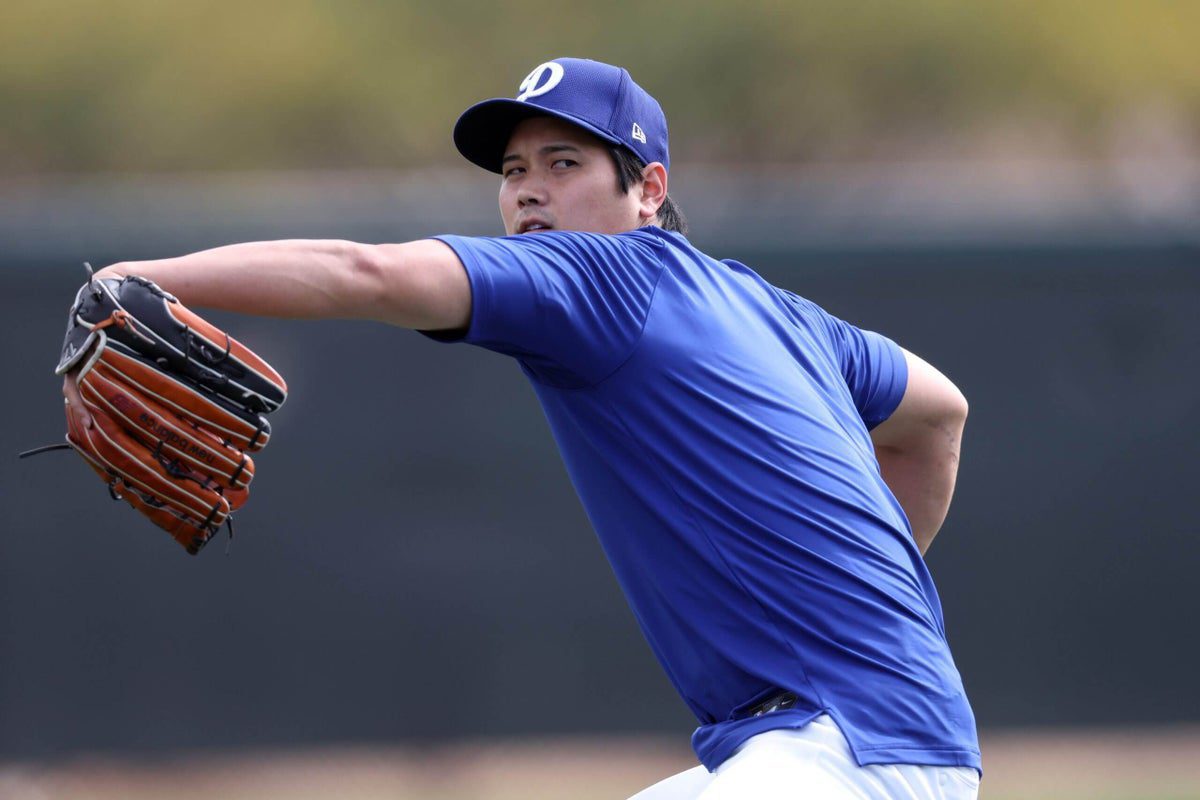
**PHOENIX** — Shohei Ohtani, who has not taken the mound since August 2023 due to a second major ligament reconstruction in his elbow, has already secured his two-way player designation, a league official informed The Athletic.
This two-way player status enables a player who fulfills dual roles as a position player and pitcher to occupy a single roster slot, which means they do not count against the 13-player limit assigned for pitchers. Ohtani’s classification has raised some questions, particularly following a recent update on the league’s website. However, the official clarified that Ohtani’s designation stems from a rule adjustment made after the 2023 season, not a recent change.
The initial rule, introduced before the 2020 season, specified that a player could achieve two-way status only by meeting certain criteria in the current or prior season. This included accumulating 20 innings pitched in the majors and making 20 starts as a position player or designated hitter, with a minimum of three plate appearances per game.
A temporary modification to this rule was enacted in 2021 in response to the COVID-19 pandemic, during which the 2020 season was limited to just 60 games. This adjustment allowed players to qualify based on performance in either of the two preceding seasons. The most recent change, set for the 2024 season, solidifies this adjustment as a permanent aspect of the rules.
Ohtani, who pitched 132 innings and served primarily as the Angels’ designated hitter in 2023, qualifies immediately, even though he did not pitch in his inaugural season with the Dodgers while recovering from surgery.
This means Ohtani will provide the Dodgers with significant advantages beyond just his performance on the mound: he effectively gives Los Angeles an extra pitcher right when he joins the rotation.
The Dodgers plan to use a six-man rotation this year, partly to accommodate their extensive lineup of starters, even before Ohtani’s expected return, which could be as early as May. In a bid to maintain the health of their high-potential starting pitchers, the organization is committing to a full-time six-man rotation, having previously utilized a makeshift six-man setup at various times in recent seasons. This approach temporarily leaves them with only a seven-man bullpen to adhere to the 13-pitcher limit.
The decision also relates to comfort levels, as both Ohtani and Yoshinobu Yamamoto have experience pitching on a weekly schedule dating back to their days in Japan. The Dodgers believe this strategy played a significant role in their successful signing of phenom Roki Sasaki this winter, who like his fellow countrymen, is accustomed to pitching once a week.
Manager Dave Roberts and his team are already strategizing on how to best manage their limited bullpen in April prior to Ohtani’s return, recognizing it as a short-term challenge that could yield longer-term benefits.
“Until Shohei returns, we will be navigating the challenges of limited build-up early in the season while managing a shorter bullpen,” Roberts noted. “We have time to figure it out, but we also have a lot of talented arms to work with.”
The Dodgers are not the only team exploring a six-man rotation for Sasaki, but with Ohtani recognized as a two-way player and boasting a roster rich with potential starters, no other team is positioned as uniquely as Los Angeles to implement this strategy.
(Photo: Chris Coduto / Getty Images)










